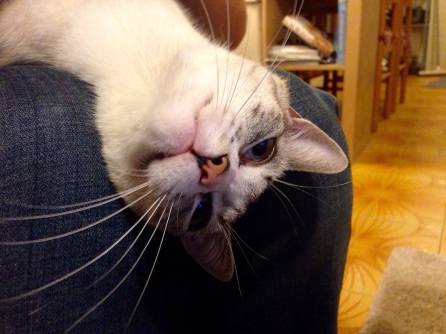Last week we talked about doggy development (refresher), so this week we’ll see the main feline stages. Most of them are actually very similar and the point is of course the same – get kitty to reach his/her full potential. The interesting thing about cats is that they are much less domesticated than dogs. Where dogs were taken into the home and bread in order to help with hunting and farming, cats were left more ferral on the outskirts of communities in order to help with control of rodents (random fact: did you know ferrets became popular in the dark ages because black cats were considered witchs’ assistants?). To this day the predatory nature of cats remains much more evident than in dogs from their behavior to their eating habits (we’ll get to those in future posts).
Cat developmental stages:
- Neonatal phase – first 2 weeks. Like in dogs and other predators they are born with closed ear canals that only open at 5-10 days and eyes that open at 10-14 days. Other senses are present though, such as taste and smell, and some reflexes to help them survive – the rooting reflex in which they bury their noses in soft and warm areas helping them find a mother’s abdomen and the Portage reflex where kittens become immobile when the skin on their neck is lifted so they can be moved more easily by their mother. They also cannot defecate and urinate alone but need stimulation by the mother. This phase is characterized by only two functions: sleep (~90%) and eat (rest of the time).
- Transition phase – a relatively short period (2-3 weeks) which acts as a connection between the neonatal and socialization phases.
- Socialization phase – 3-8 weeks. Important and crucial, this phase will define practically everything not genetic about a cat’s future behavior. In this phase kittens work on their motor skills and refine movements that will be evident in adulthood in addition to socialization. Play starts taking up more time and can be divided into 2 types:
- Individual play – aimed at developing a kitty’s hunting skills. This will reach its peak at around 7 weeks.
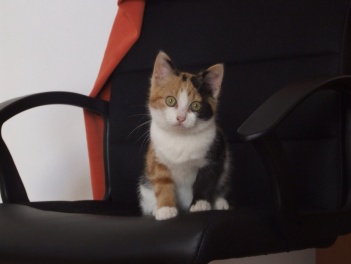
Hello Xena - Social play – used as a means of developing motor skills but more as a tool for learning social skills within the species from mother and siblings. By playing with siblings, a kitten can understand self-control and acquire social competence. This is why taking a kitten away from its family too soon may cause issues in adult life such as fear and aggression towards other cats.
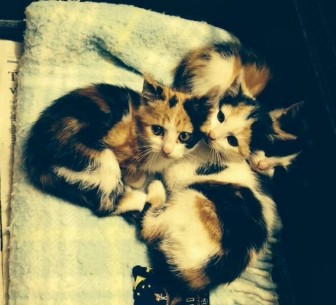
But, just as in dogs, kittens also have to undergo socialization with humans and other animals present in the home. This should be done slowly seeing as too much handling may form a nervous and excitable adult, but no contact at all will cause fear of humans in the future. Kittens also rely on their mother’s lead so if she has a good relationship with her humans, probably so will they.
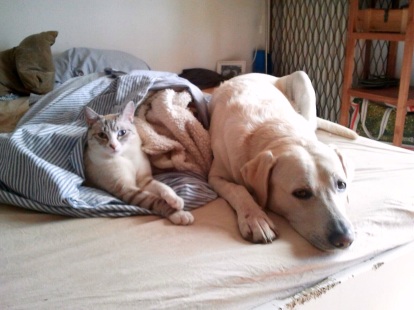
Polly and Robin demonstrating inter-species socialization The end of the socialization period is marked by the development of fear responses at 8-9 weeks.
- Individual play – aimed at developing a kitty’s hunting skills. This will reach its peak at around 7 weeks.
- Juvenile phase – up to 12/18 months. Kittens should already be weaned at around 8-9 weeks and social play keeps progressing until peaking at 14 weeks. Little ones start exploring their environment more and more and away from their mother. At around 6 months sexual behavior starts becoming evident and spaying/neutering should be considered at this point. In general these following months until adulthood can be somewhat trying since you basically have an adolescent on your hands – they want to explore, test boundaries and establish rankings within the family so you’ll have to help them fulfill their potential with stimulation and games but also be firm at times in order to make sure they understand who’s in charge (although most cats I’ve encountered are definitely number 1 in their house hold!).
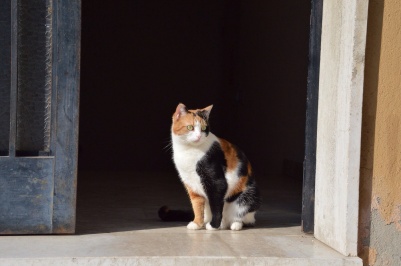
From this stage forward we have adulthood that goes on until old age at around 10 years.
As always I have to say that this is very general, individuals and situations can vary immensely and different sources may use different names and timelines. Always consult your vet or a behaviorist if you have any doubts.
If you have any questions, would like to correct something or would like to share your experiences feel free to comment below.
Next week – how to calculate the amount of calories your pet should be receiving daily.
(photos of Robin by Dana Albert. Photos of Xena by Inbar Hadar)
Follow me: Facebook // Instagram // Twitter // Bloglovin’
